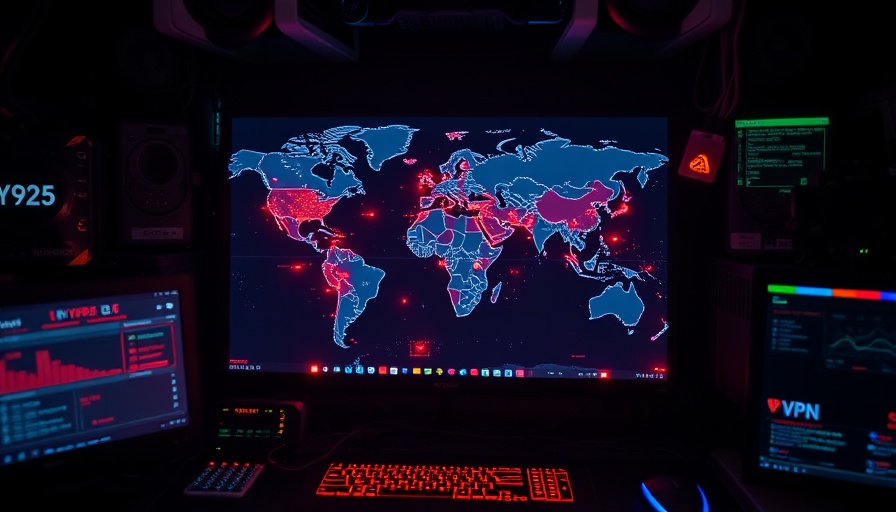
Unmasking the Salt Typhoon Cyber Threat
The alarming warning from the FBI and allied global agencies about the Salt Typhoon cyber campaign underscores a significant risk for businesses operating both in the U.S. and abroad. This espionage operation, essentially state-sponsored and linked to Chinese hacker entities, has targeted over 200 companies and spans 80 different countries, bringing to light the growing sophistication of cyber threats against corporate infrastructure. The reported infiltrations reveal that the conventional defenses many companies rely on might not be sufficient against such sophisticated attacks.
The Cost of Cyber Insecurity
Understanding the impact of previous breaches tied to Salt Typhoon is critical for any business leader. In 2024, the campaign was linked to a significant attack on U.S. telecommunications firms that compromised sensitive data of over a million users. This precedent shows that the breach path often follows a predictable route, exploiting vulnerabilities in network infrastructures, such as routers and VPNs, to collect immense amounts of private information.
Preparedness: Why It Matters
With a spotlight cast on sectors such as defense, telecommunications, and transportation, cybersecurity must be prioritized. Companies are urged to take proactive measures—like patching known vulnerabilities swiftly and adopting zero-trust architectures. Notably, Brett Leatherman from the FBI stresses that businesses should view these threats as imminent, making swift preparation the first line of defense. This shift towards a more defensive posture highlights an essential change in how organizations must approach cybersecurity.
Taking Action Against Salt Typhoon
For business leaders, recognizing the potential fallout from such threats prompts decisive action. As recommended by security agencies, organizations should cultivate a culture of cybersecurity awareness, leading their teams through threat hunting exercises and implementing robust incident response plans. Those who suspect they have been targeted should report this to local authorities promptly. This not only helps mitigate risks but ensures that intelligence around such breaches can be shared between organizations on a broader scale, enhancing responses globally.
Conclusion: Stay Ahead of the Curve
As Salt Typhoon’s operations illustrate the ominous capacity for cyber intrusion, businesses must remain vigilant and prepared. The evolving landscape of cyber threats demands not just awareness but also rapid action to safeguard organizational integrity and reputation. Be proactive and engage in conversations about cybersecurity within your networks—knowledge sharing is a powerful tool against such persistent cyber adversaries.
 Add Row
Add Row  Add
Add 










Write A Comment